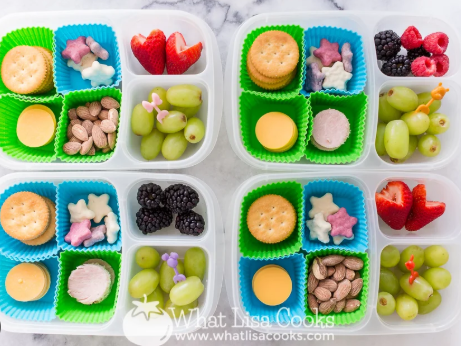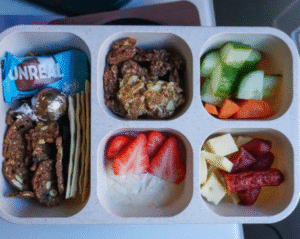Packing a school lunch every day can feel repetitive, especially when it seems easier to grab the same sandwich or snack again and again. Parents often want to provide a balanced, nourishing meal but also worry about whether their child will actually eat what is inside the lunchbox. The secret to solving this challenge is variety. When a lunch is filled with colorful foods, different textures, and rotating options, children are more likely to stay interested and enjoy their meal. Creating variety in school lunches does not have to be complicated. With a little planning, you can design lunches that are healthy, appealing, and exciting.
A healthy lunch starts with balance. A balanced meal generally includes a source of protein, whole grains, fruits, vegetables, and a small treat or dairy option if desired. This combination not only fuels a child’s energy for the school day but also ensures they are getting important nutrients. Variety comes into play when you mix and match these food groups in creative ways. For example, instead of always using bread for sandwiches, you might use wraps, pita pockets, or even lettuce leaves. Small changes like this keep meals fresh and prevent lunch fatigue.
One way to add variety is by thinking in colors. Children are naturally drawn to bright and appealing food. Packing a rainbow of fruits and vegetables ensures they get different vitamins while also making the meal look fun. Red bell peppers, orange carrots, yellow corn, green cucumbers, and purple grapes can easily be rotated throughout the week. Instead of serving the same apple slices every day, try offering strawberries one day, melon the next, and a small fruit salad later in the week. This simple change keeps lunches interesting and teaches children to enjoy a wide range of flavors.
Texture is another important factor when creating variety. Children notice whether their food is crunchy, smooth, chewy, or soft. By combining different textures, the lunchbox feels more exciting. Pair crunchy carrot sticks with a creamy dip like hummus or yogurt-based dressing. Add a chewy granola bar alongside smooth applesauce. Swap plain crackers for whole grain pretzels or rice cakes. These small shifts not only introduce variety but also make healthy foods more appealing.
Rotating protein sources is another smart strategy. Instead of relying on deli meat every day, you can switch between hard-boiled eggs, grilled chicken strips, tuna salad, bean wraps, or even cheese cubes. For plant-based options, try roasted chickpeas, nut butter sandwiches, or edamame. These provide important nutrients while also giving children a chance to discover new favorites. Many children enjoy the surprise of opening their lunchbox to find something different from the day before.
Presentation also plays a role in making lunch more enjoyable. A little creativity goes a long way. Using small containers or bento-style lunchboxes allows you to pack multiple foods without them mixing together. This setup naturally encourages variety since each compartment can hold something different. A box might include a small portion of pasta salad, some fruit slices, a handful of crunchy veggies, and a piece of cheese. Seeing a range of foods laid out neatly can encourage children to taste everything instead of sticking to just one item.
Variety does not always mean adding more complicated foods. Sometimes, it is about rethinking the way you serve familiar ingredients. A simple turkey sandwich can be rolled into pinwheels with a tortilla wrap. Apple slices can be paired with a small container of peanut butter for dipping. Carrot sticks can be cut into fun shapes or packed with a yogurt-based ranch dip. Even small changes in presentation can turn ordinary foods into something children look forward to eating.
Leftovers from dinner can also bring variety into school lunches. Packing a small portion of pasta, roasted vegetables, or grilled chicken can save time while ensuring your child enjoys a different type of meal. Many families find that using dinner leftovers not only adds variety but also reduces food waste. As long as the food is safe to eat cold or in a thermos, it can be a refreshing change from sandwiches.
Another way to create variety is by including foods from different cultures. Children enjoy trying new flavors, and lunch can be a perfect opportunity to introduce them to simple international dishes. A pita pocket with hummus and vegetables, sushi rolls with cucumber and avocado, or quesadillas with beans and cheese can all be fun alternatives to the usual lunch items. These experiences not only broaden their palate but also make lunchtime more exciting.
Snacks and sides can be rotated as well to keep things interesting. Instead of packing the same bag of chips or crackers each day, try popcorn one day, homemade trail mix the next, or whole grain muffins later in the week. Adding a yogurt parfait with fruit and granola or a small cup of cottage cheese can also make the meal more satisfying while offering a change from the usual options. Even something as simple as rotating between different types of cheese sticks can make a difference.
Planning ahead is key when you want to include variety without adding stress. Making a weekly lunch plan helps you map out different meals and ensures you have the ingredients on hand. Many parents like to create a list of lunchbox ideas for each food group, then mix and match during the week. For example, you might list several fruits such as bananas, grapes, and oranges, and then rotate them across five days. The same can be done for vegetables, proteins, and grains. This system helps avoid last-minute decisions while keeping lunches balanced and interesting.
Involving children in the process can also make a big difference. When kids help choose fruits, vegetables, or snacks from the store, they are more likely to eat them at lunch. Allowing them to pick from a small selection of options gives them a sense of control while ensuring healthy choices. For example, you might ask whether they prefer grapes or melon for the next day’s lunch, or whether they want carrots or cucumbers as their crunchy vegetable. This not only adds variety but also encourages children to develop healthy eating habits.
Packing a healthy school lunch with variety may seem like extra work at first, but it quickly becomes easier with a little organization and creativity. By rotating foods, using colorful fruits and vegetables, experimenting with textures, and presenting meals in fun ways, you can keep lunch exciting while still focusing on nutrition. Children who look forward to opening their lunchbox are more likely to eat well, stay energized throughout the day, and develop a positive relationship with healthy foods. Over time, these small steps build lasting habits that benefit their overall health.
With thoughtful planning and a focus on variety, you can make every school lunch both nourishing and enjoyable. Rather than falling into a routine of the same foods each day, your child’s lunchbox can become a source of surprise, fun, and flavor. In the end, variety is not just about keeping meals interesting—it is about supporting growth, energy, and a lifelong love of healthy eating.



